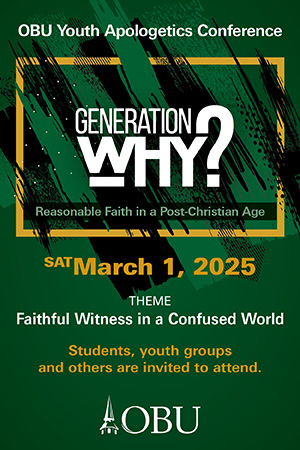There’s nothing magical about beginning a new calendar year, but it does provide a natural opportunity for reflection and planning. Looking back at recent research can give pastors and church leaders an idea of how to prepare for 2024.
Obviously, only God knows exactly what this year holds. We can still remember all of our plans being radically altered only a few months into 2020. However, trends often take shape and give us insight into the direction things are moving.
Consider these 10 trends as you plan for ministry this year.
No more post-pandemic bounce
Throughout the COVID-19 pandemic and immediately after, many pastors were wondering when churches would finally return to normal. When would all of the churchgoers return? Who would be returning? Last year was the answer.
An August 2023 Lifeway Research study found 100 percent (rounded to the nearest whole number) of churches met in person that month, the same as September 2022. Those churches estimated their attendance to be 89 percent of what it was pre-COVID. In other words, 9 in 10 churchgoers have returned, and that’s likely to be the end of churches gaining simply by having previous attendees start showing up again.
Shrinking groups but growing importance
Fewer Americans attend church today than several years ago, but also a smaller percentage of churchgoers are involved in adult small groups. A Lifeway Research study found groups participation dropped from 50 percent of worship attendees in 2008 to 44 percent in 2022.
Unfortunately for churches, involvement in groups is a predictive factor of an individual’s discipleship growth. Those attending a small group are also more likely to share with others how to become a Christian and invite others to church.
The more churches can plug their attendees into a small group, the healthier the church will become and the more likely it will be to grow.
Shifting attendance patterns
What does it mean to be a regular churchgoer? Three in 5 U.S. Protestant pastors say someone needs to attend at least twice a month, according to a Lifeway Research study. Among churchgoers, 4 in 5 place the standard at least twice a month. But some have different measures of regularity and what level of commitment should exist.
Another study of churchgoers found around 2 in 5 say they will skip church at least a few times a year just to get some extra sleep or enjoy an outdoor activity when the weather is nice.
Online attendance can also complicate how churches gauge participation. In 2022, nearly 2 in 5 churchgoers said they watched a livestream service instead of attending in person on more than five occasions, according to Lifeway Research.
Church leaders will have to examine the patterns within their congregations and develop strategies for staying connected with those who only feel the need to drop in about once a month or only watch online.
Increasing diversity
As the United States grows more diverse, so are most churches. And most churchgoers approve to an extent. Half (49 percent) say their church needs to be more ethnically diverse, while 41 percent disagree, according to Lifeway Research. But around 7 in 10 (69 percent) say their church is doing enough to be ethnically diverse.
All U.S. Protestant churches could learn from their Hispanic counterparts, which are larger, younger, and more effectively evangelistic than the average congregation.
Stopping the switching
Most U.S. churchgoers (53 percent) have changed churches at least once as an adult, according to Lifeway Research. Three in 5 say a residential move played a role in that decision. But many churchgoers switch congregations without switching homes. Other research indicates that the pandemic increased this likelihood.
Pastors and church leaders should be aware that this is a normal part of church life but also work to close their back door, even if they don’t bolt it shut. Also, as our culture remains more transient, be proactive about reaching those new to your community.
Equipping women to serve and lead
Few churches have a paid women’s ministry staff position, but almost every church could benefit from more investment in ministry to women, according to a Lifeway Research study.
Female churchgoers feel their church values women (96 percent), invests in and equips women (90 percent), and provides them with a place where they enjoy serving (84 percent). But there is room for improvement. Around 3 in 5 women attend a church with an organized ministry to women. Those women have access to unique research-proven benefits to their discipleship. Beginning a women’s ministry is a quick way for many churches to help half of their congregation grow in their walk with Christ.
Rising prosperity gospel
Churchgoers increasingly embrace prosperity gospel beliefs, and they say they’re learning it at their church. Half (52 percent) say their church teaches God will bless them if they give more money to the church, up from 38 percent in 2017, according to Lifeway Research. Churchgoers are also more likely to say they have to do something for God in order to receive material blessings from Him (45 percent v. 26 percent).
Helping the deconstructors reconstruct
Pastors and churchgoers are increasingly aware of individuals who are “deconstructing their faith by which they systematically dissect and often reject Christian beliefs they grew up with,” according to Lifeway Research.
Churchgoers say it is happening in the pews right now. Pastors and leaders must be able to help individuals struggling with their faith to address their doubts healthily and biblically.
Overcoming economic headwinds
Half of pastors say the economy is having a negative impact on their congregation, according to Lifeway Research. For around 7 in 10 churches, giving remained at or above the previous year’s levels and close to or above the budget. Unfortunately, inflation levels rose more than giving did for most congregations. The economic impact was felt even stronger among smaller churches.
Thankfully, as a potential buffer against a weak economy, churches are more likely to have stronger cash reverses today compared to 2016, according to Lifeway Research. Still, churches will need to think strategically this year when planning their budget and expenses.
Calming fears
Almost 7 in 10 pastors (69 percent) believe there is a growing sense of fear within their congregations about the future of the nation and the world, according to Lifeway Research. Additionally, more than 3 in 5 (63 percent) say their churches have a growing dread about the future of Christianity in the U.S. and around the world. Yet, fear is the emotion Americans say they most want to avoid.
Pastors who can help their congregations overcome their fears or place them in the proper perspective will be in an excellent position to reach their community. Churches filled with fearful congregants will find it difficult to reach their already fearful neighbors.
Photo by Matt Botsford on Unsplash






